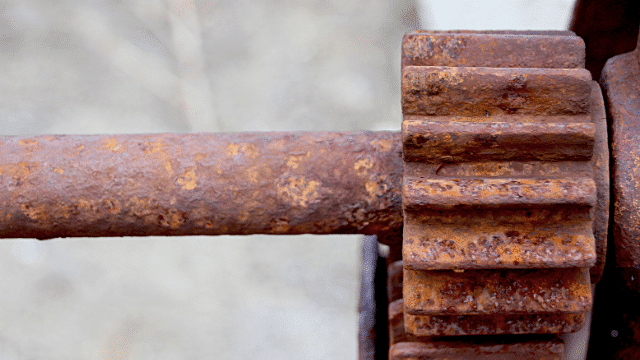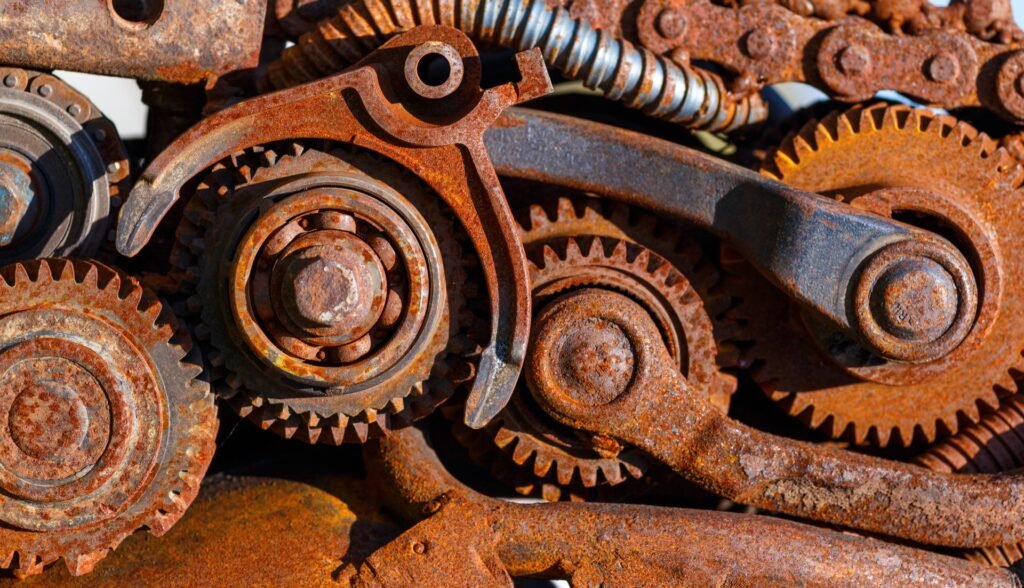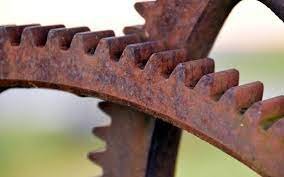Rust is a major problem that builds upon metals. It is an orange-brown discoloration and can affect iron, alloys, and steel. Rust occurs while combining iron with oxygen in the air and ruins the stability and functionality of structure or machinery, and becomes a cause of great loss for your business so try to sort out this problem by using some effective and helpful ways.

Some Effective Methods / Strategies to Prevent Rust
Rust can cause metal expansion and place stress, and ultimately metal becomes brittle, flaky, and weak. So better to know how you can prevent rust. There are some effective ways and strategies for preventing rust, but the best thing is preventing moisture and using a material that is not much prone to rust.
1.Bluing
Bluing is an effective technique that provides limited rust protection for steel items and also proves helpful for metalwork and fine clocks. Bluing is a process of dipping metal objects into a bluing solution of potassium nitrate and sodium hydroxide. It is mostly used to improve damaged metals’ aesthetic qualities and conditions and can be categorized into two categories, i.e., cold and hot bluing.
Cold bluing is safer and needs no heat, while hot bluing requires careful handling for an inexperienced person. Bluing is a cost-effective technique and can extend the life of any steel item. Bluing makes items more attractive for buyers and provides strong corrosion resistance to metal objects such as vehicles, tools, outdoor gears, and large metal parts.
2.Store Properly and Regularly Maintenance
The first step to prevent your metal parts from rusting is to keep the metal parts dry and clean. Regular maintenance and proper storage are also helpful in this regard so keep your metal parts properly and away from moisture and water. If your parts are affected by rust, it’s necessary to scrape them off immediately.
You can try soap and warm water for scrubbing and use a new coat of paint on the affected area. Regular care and maintenance stop rust from progressing and forming. A razor blade can also use for a small area, and it can remove surface grime.
3.Powder Coating
Powder coating is a technique in which a layer of epoxy, acrylic, polyester, and polyurethane is quickly painted on a metal object. It is evenly applied on a clean surface using an electrostatic spray. A charged, non-conductive powder is used for electrically conductive objects. It is good for certain finishes and metal parts and covers a metal object or component.
The powder painting layer is helpful for the prevention of rust and prevents moisture from contacting and reaching with metal. It is essential that the coating be intact to prevent rust; otherwise, any fragile area can cause rust if moisture reaches that area. A coating can protect from corrosion and also keep your metal parts scratch-free.

4.Use of an Alloy to Resist Rust
Rust can resist alloys such as stainless steel can resist rust due to its 11 % chromium and a high percentage of reactive chromium content. But it is not suitable for all applications, but you can use stainless steel for some applications. Chromium oxide makes a protective shield against rust and prevents oxygen from reaching the underlying steel. This protective shield reforms if it is damaged in any case. The rust resistance can be increased by using nickel, manganese, chromium, and other techniques.
Stainless steel can prevent rust completely, although they are not completely corrosion-resistant and can rust slowly. We can change stainless steel’s conductivity, appearance, and toughness by changing its composition. It is necessary to consider the surrounding environment and welding techniques because these factors can affect corrosion rate.
5.COR-TEN Steel (Weathering Steel)
COR-TEN steel contains up to 21% of alloy elements such as phosphorus, nickel, copper, and chromium, preventing rust. They acquire a layer of rust and stop rust in specific environmental conditions afterward. The use of COR-TEN steel proves more cost-effective than stainless steel applications.
6.Galvanizing
Galvanizing is an effective and cheap way of rust prevention. This process accomplishes through electroplating or hot dipping galvanizing in a thin layer of zinc to protect from rust. This hot dipping can stop oxygen and water from contacting metals. Zinc corrodes at least 30 times slower than other metals, but its coating can not stand up in harsh environments such as acid rain and changes the outer appearance of objects.
7.Encourage Design Parts That Prevent Rust
You can prevent your metal parts by choosing and encouraging designs to protect them from rust and corrosion. It is better to choose parts having shapes and features not suitable for rust. They should not have such features as tunnels and deep crevices where moisture and airflow can pass. Engineers should keep in view these points while creating CAD designs. The metal parts should be easy to clean and maintain.
8.Use of VCI Packaging to Prevent Rust
Vapor corrosion inhibitor (VCI) packaging is an easy option to prevent rust from metal parts and a type of chemical compounding that we use to protect the ferrous and non-ferrous metal from corrosion and rust. We can use VCI packaging products by properly storing metal parts then VCIs can activate and fill up the empty area inside the packaging. The VCIs ions make a protection shield on a metal surface and cure rust without oil, protective coating, and grease.
9.FOZZ
FOZZ is a balanced blend of wetting agents, extenders, and phosphoric chemicals that can dissolve rust and decrease rusting. FOZZ is a primer and not a paint that conditions metal so that the paint can adhere. FOZZ is mostly suitable for contractors, welding shops, lawn maintenance, and steel fabricators. It is a non-flammable and water-based solution that can dissolve grease and bleeding rust from painted surfaces, engines, floors, and walls.

Summing Up
Rust is highly destructive to the integrity of your metal parts, so you can prevent your metal parts by applying all these strategies and methods. These tips can prove helpful for the prevention of rust and also eliminate the further chances of corrosion and rust.
Related Articles:

